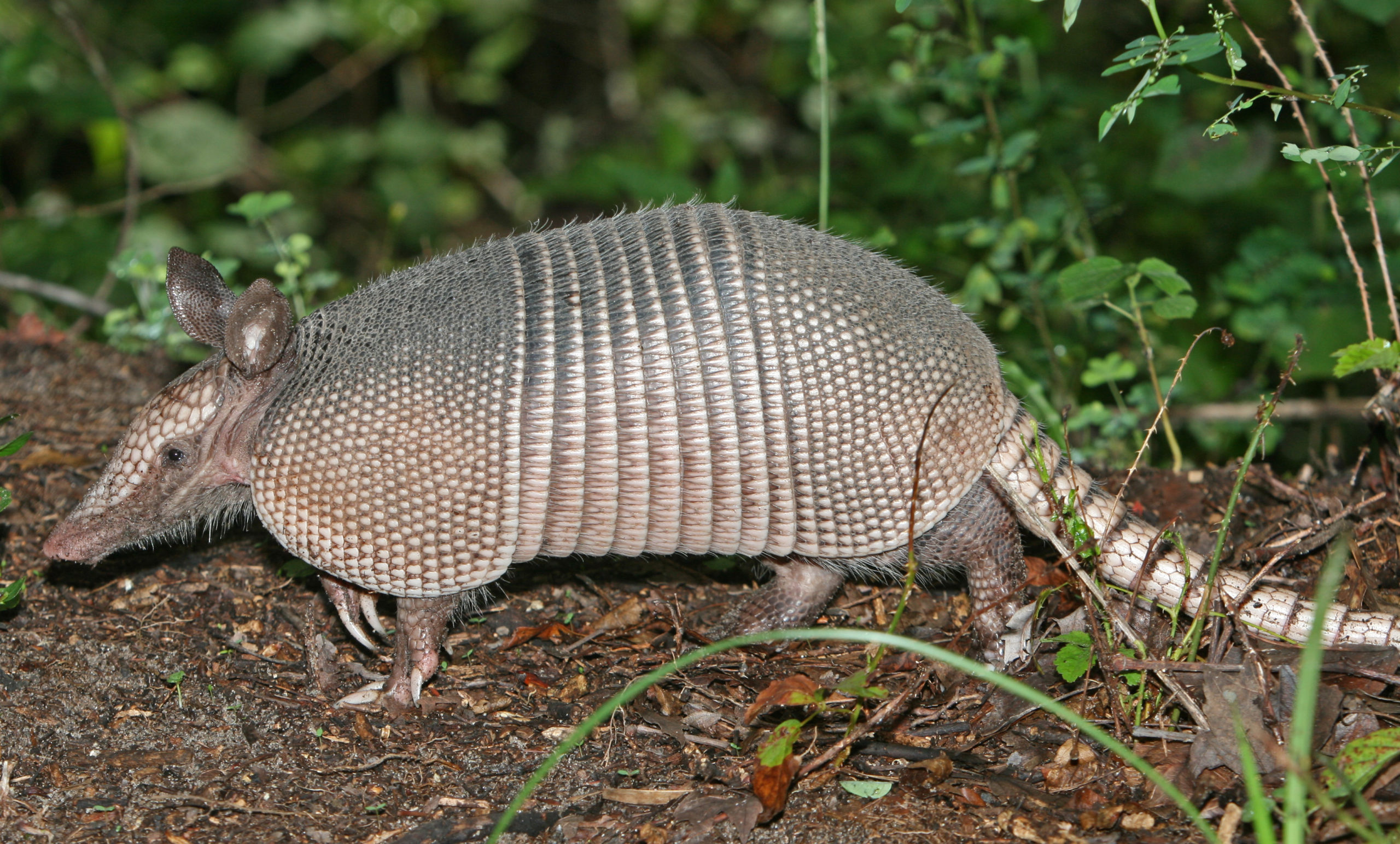17 July 2020
Research Suggests Leprosy to be a Zoonosis, The Reservoir: Armadillos
Posted by Shane Hanlon
This is part of a student blog series as part of the University of Pittsburgh’s Disease Ecology Class that our own Shane M Hanlon is currently teaching. Find out more about the series and read all the posts here!
By Nick White

Nine-banded armadillo. Credit: Wikipedia
Leprosy, renamed Hansen’s Disease, is a chronic condition caused by the bacterium Mycobacterium leprae (M. leprae). The disease primarily targets the skin and peripheral nerves, however new forms of the bacteria have also been found to affect other areas such as the eyes, testicles, and bones. An individual, once infected, typically shows an incubation period of three to seven years. The disease is more prominent in tropical and subtropical climates and also tends to affect men more than women. Transmission of this disease can occur via droplets of secretions released from either the oral or nasal cavities, through sneezing or coughing, from individuals with mycobacteria. Exact biological vectors and reservoirs for this disease are still unknown but growing research suggests armadillos to be the primary reservoir.
In a study published to Revista do Instituto de Medicina Tropical de São Paulo titled “Armadillos and Leprosy: From Infection to Biological Modeling,” authors Ilana Vanessa Pristo de Medeiros Oliveira, Patricia Duarte Deps, and João Marcel Azevedo de Paula Antunes provide evidence that suggests armadillos are reservoirs for Hansen’s disease. Certain primate species and armadillos are prone to catching M. leprae and thus are naturally infected with the disease. Several studies have been published over the last two decades on natural infection of M. leprae in wild armadillos, thereby strengthening the claim of leprosy to be a zoonosis. To reinforce the hypothesis regarding zoonosis, the study includes an example from the United States of a patient positive with Hansen’s Disease. The patient in this study reported no travel history to endemic countries or to having come into contact with anyone infected with M. Leprae. The patient, however, did report to having come in contact with armadillos thus strengthening the claim that leprosy is a zoonosis.
The article then continues on to discuss how armadillos have been established as the best experimental model of M. leprae infection given their ability to mimic human disease and produce a substantial number of bacteria in multiple organs. Because of this, it is important to continue research in order to better understand how natural M. leprae infection affects armadillos. Fortunately, Hansen’s disease is hard to contract, and according to the United States Center for Disease Control and Prevention 95% of adults exposed to M. lepraewill not become infected due to their immunes systems ability to naturally fight off the bacteria. Nonetheless, given that armadillos can mimic human disease, studying them will provide opportunity to assess pathogenesis in preclinical stages not previously seen in humans. Sources: Leprosy Transmission
Armadillos and leprosy: from infection to biological model
World Leprosy Day: Bust the Myths, Learn the Facts










 The Plainspoken Scientist is the science communication blog of AGU’s Sharing Science program. With this blog, we wish to showcase creative and effective science communication via multiple mediums and modes.
The Plainspoken Scientist is the science communication blog of AGU’s Sharing Science program. With this blog, we wish to showcase creative and effective science communication via multiple mediums and modes.